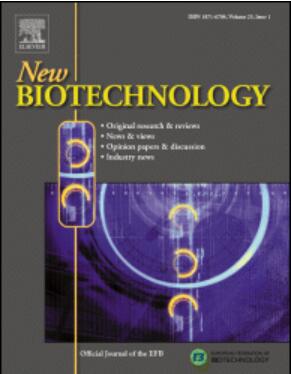Establishment of a cell-free multi-enzyme cascade for the synthesis of UDP-GalNAc
IF 4.9
2区 生物学
Q1 BIOCHEMICAL RESEARCH METHODS
引用次数: 0
Abstract
UDP-N-acetylgalactosamine (UDP-GalNAc) is an essential building block in the synthesis of glycans including O-glycans and glycosaminoglycans. For the latter, enzymatic synthesis is often a promising approach for producing multi-gram amounts. However, the high cost of UDP-GalNAc has limited this approach. This study reports on the development and optimization of a multi-enzyme cascade for synthesizing UDP-GalNAc from inexpensive substrates. Consisting of six recombinant enzymes, the cascade converts uridine (Uri) and GalNAc to UDP-GalNAc with in situ ATP regeneration using polyphosphate (PolyPn). Two rounds of Design of Experiments (DoE) optimization were performed to systematically evaluate and optimize reaction parameters including pH, temperature, MgCl2, ATP, and PolyPn concentrations. The established cascade achieved a percentage yield of 95 % and an UDP-GalNAc titer of 46.1 mM (28 g/L). This represented a 19-fold improvement over the initial conditions. Purification by anion-exchange chromatography yielded a maximum recovery of 89 % and a purity of 90 %. Overall, this scalable, low-cost enzymatic synthesis of UDP-GalNAc overcomes current limitations in availability and cost, potentially enabling new applications in the field of glycobiotechnology.
无细胞多酶级联合成UDP-GalNAc的建立。
udp - n -乙酰半乳糖胺(UDP-GalNAc)是合成甘聚糖(包括o -聚糖和糖胺聚糖)的重要组成部分。对于后者,酶合成通常是生产多克量的有希望的方法。然而,到目前为止,UDP-GalNAc的高成本限制了这种方法。本研究报道了一种多酶级联反应的开发和优化,用于从廉价底物合成UDP-GalNAc。由6个重组酶组成,该级联将尿苷(Uri)和GalNAc转化为UDP-GalNAc,并使用多磷酸(PolyPn)原位ATP再生。通过两轮实验设计(DoE)优化,对pH、温度、MgCl2、ATP和polyypn浓度等反应参数进行了系统评价和优化。建立的级联产率为95%,UDP-GalNAc滴度为46.1mM (28g/L)。这比初始条件改善了19倍。用阴离子交换色谱法纯化,回收率89%,纯度90%。总的来说,这种可扩展的、低成本的酶促合成UDP-GalNAc克服了目前可用性和成本的限制,有可能在糖生物技术领域实现新的应用。
本文章由计算机程序翻译,如有差异,请以英文原文为准。
求助全文
约1分钟内获得全文
求助全文
来源期刊

New biotechnology
生物-生化研究方法
CiteScore
11.40
自引率
1.90%
发文量
77
审稿时长
1 months
期刊介绍:
New Biotechnology is the official journal of the European Federation of Biotechnology (EFB) and is published bimonthly. It covers both the science of biotechnology and its surrounding political, business and financial milieu. The journal publishes peer-reviewed basic research papers, authoritative reviews, feature articles and opinions in all areas of biotechnology. It reflects the full diversity of current biotechnology science, particularly those advances in research and practice that open opportunities for exploitation of knowledge, commercially or otherwise, together with news, discussion and comment on broader issues of general interest and concern. The outlook is fully international.
The scope of the journal includes the research, industrial and commercial aspects of biotechnology, in areas such as: Healthcare and Pharmaceuticals; Food and Agriculture; Biofuels; Genetic Engineering and Molecular Biology; Genomics and Synthetic Biology; Nanotechnology; Environment and Biodiversity; Biocatalysis; Bioremediation; Process engineering.
 求助内容:
求助内容: 应助结果提醒方式:
应助结果提醒方式:


